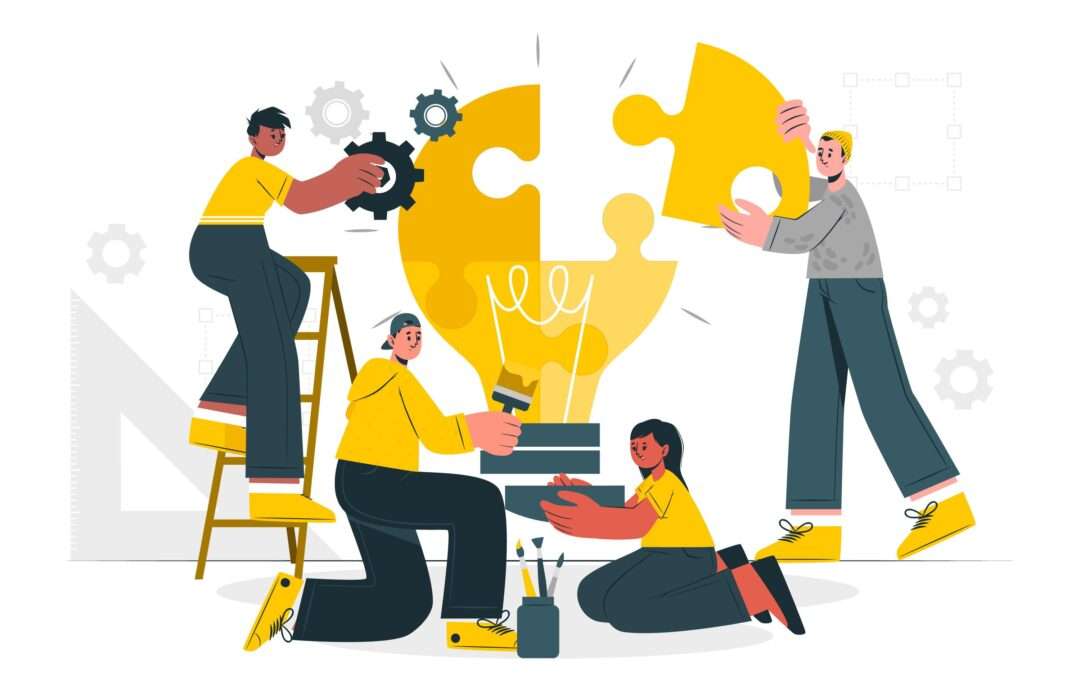Imagine a meticulously crafted terrarium – a living microcosm sealed within glass, where every element exists in delicate, purposeful harmony. Verdant plants breathe life, rich soil nurtures growth, and microscopic organisms weave an intricate dance of survival and renewal. Each component is critical in transforming the enclosed space into a self-sustaining ecosystem.
Like the terrarium’s interconnected organisms, successful teams operate as living systems where every member’s contribution is fundamental. The boundaries that define the terrarium – like organizational structures – shape interactions, communication, and collective potential.
Just as a terrarium’s survival depends on understanding and nurturing its complex relationships, team effectiveness hinges on recognizing the subtle dynamics that drive value creation. Each team member is not just an individual contributor but an integral part of a larger, interconnected whole—where collaboration, mutual support, and systemic thinking determine the team’s capacity to thrive and innovate.
The metaphor invites us to see teams not as static collections of individuals but as living, breathing ecosystems capable of remarkable transformation when their intrinsic connections are understood and intentionally cultivated.
We transform traditional organisational structures into adaptive, innovative networks by mapping natural interaction patterns through value streams, Team Topologies, and strategic Red Teaming. This approach doesn’t just optimize teams – it creates self-sustaining environments where collaboration, creativity, and continuous value generation become the natural state of work.
Step-by-step approach to team design
1. Map the Value Stream
- Objective: Visualize the flow of work from concept to delivery.
- Action: Identify all steps in delivering a product or service, from initial customer requests to final delivery and feedback.
- Outcome: A clear understanding of how work flows, highlighting areas for improvement and potential bottlenecks.
2. Identify Stakeholder and Customer Needs
- Objective: Align team efforts with customer and stakeholder expectations.
- Action: Engage stakeholders and customers to gather insights on their requirements and pain points.
- Outcome: A prioritized list of customer needs that will guide team focus and objectives.
3. Determine Team Structure
- Objective: Create teams that enhance the flow of work.
- Action: Decide on team structures based on the mapped value stream and customer needs, and not on framework.

Consider the following team design patterns:
- Stream-Aligned Teams: These teams are focused on delivering specific segments of the value stream, ensuring that their efforts are directly aligned with customer needs and business objectives.
- Cross-Functional Teams: Composed of members with diverse expertise, these teams enable rapid iteration by bringing together various skills such as development, design, and testing to collaborate on projects.
- Feature Teams: Responsible for the end-to-end delivery of specific features, these teams are designed to handle all aspects of a feature’s lifecycle, from conception to deployment and feedback.
- Component Teams: These teams specialize in specific components or technologies within a more extensive system, providing deep expertise and ensuring the quality and performance of particular parts of the product.
- Service Teams: Dedicated to providing specific services or functions that support other teams, service teams help streamline processes and enhance overall productivity by offering essential resources.
- Dynamic Teams: These teams form and evolve based on current project requirements and the skills of their members, emphasizing adaptability and responsiveness to changing needs and priorities.
- Unfix Model Teams: Based on Jurgen Appelo’s Unfix Model, these teams adapt their structure and processes to fit the current context, promoting flexibility and continuous evolution in their approach to work.
- Enabling Teams: These teams assist stream-aligned teams by providing specialized knowledge, tools, and resources to help overcome obstacles and improve performance.
- Complicated Subsystem Teams: Focused on managing complex areas of a system that require specialized knowledge, these teams tackle intricate technical challenges that others may not be equipped to handle.
- Platform Teams: These teams build and maintain the infrastructure and tools that support other teams, ensuring that shared services are available to enhance productivity across the organization.
- Project-Based Teams: Formed to deliver a specific project or initiative, these teams are often temporary and dissolve after achieving their goals, allowing for focused effort on defined objectives.
- Community of Practice Teams: These teams are formed around shared interests or expertise, encouraging knowledge sharing and collaboration among members to foster continuous learning and improvement.
